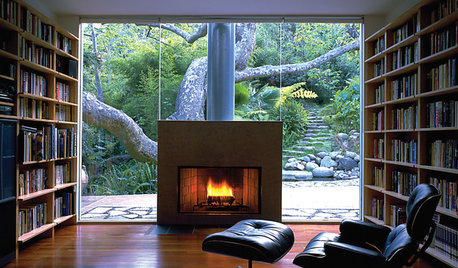Geothermal - well question
mees135
15 years ago
Related Stories

Easy Green: 6 Must-Answer Questions Before You Buy
Thinking about buying ecofriendly furniture? For a truly environmentally conscious home, ask yourself these questions first
Full Story
WORKING WITH PROS9 Questions to Ask a Home Remodeler Before You Meet
Save time and effort by ruling out deal breakers with your contractor before an in-person session
Full Story
CURB APPEAL7 Questions to Help You Pick the Right Front-Yard Fence
Get over the hurdle of choosing a fence design by considering your needs, your home’s architecture and more
Full Story
GARDENING GUIDESNo-Regret Plants: 5 Questions Smart Shoppers Ask
Quit wasting money and time at the garden center. This checklist will ensure that the plants you're eyeing will stick around in your yard
Full Story
REMODELING GUIDESConsidering a Fixer-Upper? 15 Questions to Ask First
Learn about the hidden costs and treasures of older homes to avoid budget surprises and accidentally tossing valuable features
Full Story
KITCHEN DESIGN9 Questions to Ask When Planning a Kitchen Pantry
Avoid blunders and get the storage space and layout you need by asking these questions before you begin
Full Story
SELLING YOUR HOUSE15 Questions to Ask When Interviewing a Real Estate Agent
Here’s what you should find out before selecting an agent to sell your home
Full Story
MOST POPULAR8 Questions to Ask Yourself Before Meeting With Your Designer
Thinking in advance about how you use your space will get your first design consultation off to its best start
Full Story
REMODELING GUIDES13 Essential Questions to Ask Yourself Before Tackling a Renovation
No one knows you better than yourself, so to get the remodel you truly want, consider these questions first
Full Story
COFFEE WITH AN ARCHITECTA Quiz for Architects in Question
Should you trade in your T-square for a barista tray? Answer a few simple questions to find out
Full Story





marknmt
mees135Original Author
Related Professionals
Carson Solar Energy Systems · Eastvale Solar Energy Systems · Emeryville Solar Energy Systems · Freeport Solar Energy Systems · Maplewood Solar Energy Systems · Moreno Valley Solar Energy Systems · Rialto Solar Energy Systems · Torrington Solar Energy Systems · Santa Cruz Home Builders · Georgetown Roofing & Gutters · Huntsville Roofing & Gutters · Nashville Roofing & Gutters · Red Bank Roofing & Gutters · Ahwatukee Roofing & Gutters · Miami Beach Roofing & Guttersmarknmt
fsq4cw
marknmt
fsq4cw
mees135Original Author
marknmt
mees135Original Author
marknmt
mees135Original Author
joe.ami
zimzim
59 Dodge